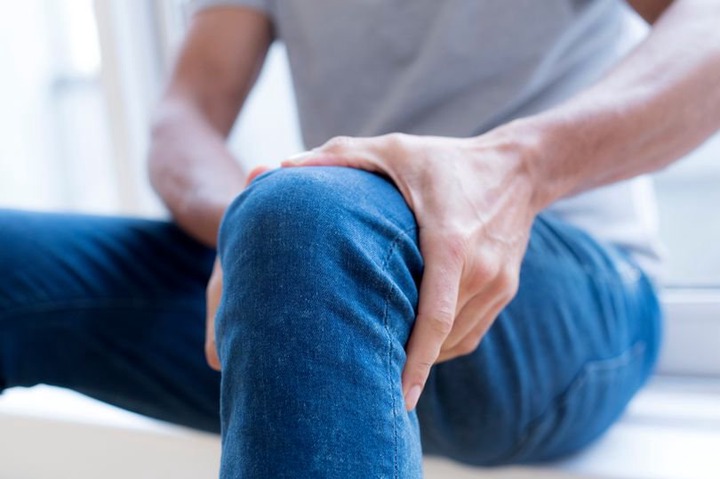
Elevated cholesterol levels, also known as hypercholesterolemia, can be a silent but potentially deadly condition involving an excessive amount of cholesterol—a type of fatty substance—in the blood. While initially appearing harmless, if left unchecked, elevated cholesterol can greatly increase the risk of serious health issues like heart attacks and strokes over time.
Cholesterol accumulation can lead to clogged arteries that impede proper blood circulation and significantly raise the risk of cardiovascular diseases, which account for nearly 18 million deaths globally each year. In the UK, around one in four deaths is due to cardiovascular disease.
One major concern with high cholesterol is its lack of symptoms, which often results in many people being unaware of their condition until experiencing a medical emergency or when tested during a general practitioner appointment. The NHS has highlighted this invisible threat, stating: “High cholesterol does not usually cause symptoms. You can only find out if you have it from a blood test.”
Nonetheless, certain warning signs exist that could signal high cholesterol. Notably, the development of peripheral arterial disease (PAD) may serve as a critical warning.
PAD is a common condition where fatty deposits block arteries, reducing blood flow to the leg muscles—something the NHS notes certainly “restricts” muscle circulation.
Peripheral Artery Disease (PAD) might not always show symptoms, but when it does, the legs can exhibit certain signs. The NHS has highlighted seven key indicators to watch for, such as hair loss on your legs and foot ulcers.
Key Limb Indicators of High Cholesterol You Shouldn’t Ignore
1. Leg pain during physical activity
Leg pain during physical activity, known as claudication, can indicate high cholesterol. This occurs when narrowed or blocked arteries limit blood flow to the leg muscles. As a result, the muscles do not receive enough oxygen and nutrients to function properly, leading to pain and discomfort.
2. Heaviness or fatigue in legs
One way your limbs may warn you about high cholesterol is through the sensation of heaviness or fatigue in the legs. This feeling is often described as tiredness, weakness, or a heavy burden weighing down the legs. This sensation can make it challenging to carry out daily activities and worsen with prolonged standing or walking.
3. Coldness or numbness in limbs
Experiencing cold feet is common in chilly weather, as our bodies naturally react to the cold by constricting blood vessels. However, if you find yourself with cold feet for no apparent reason, it might be a sign that your cholesterol levels are at play.It is cr ucial to notice this symptom and consider getting your blood tested.
4. Frequent leg cramps
Frequent leg cramps can be a bothersome and painful experience, and they may indicate high cholesterol levels. While leg cramps are commonly associated with muscle fatigue or dehydration, they can also be linked to poor circulation caused by elevated cholesterol. It is essential to pay attention to recurring leg cramps and consider them as potential warning signs of high cholesterol. Seeking medical advice and checking cholesterol levels can help identify any underlying issues.
5. Weakness or difficulty in walking
Sometimes weakness or difficulty walking can be a warning sign of high cholesterol levels. When cholesterol builds up in the arteries, it restricts blood flow and oxygen supply to the muscles, leading to weakness and difficulty walking.
6. Change in skin color
While most people associate high cholesterol with its impact on heart health, it can also manifest in visible changes on the skin. High cholesterol levels can lead to the formation of small, yellowish deposits known as xanthomas, which may appear under the skin. These deposits can occur in various areas of the body, including the eyelids, palms, soles of the feet, and tendons. When these xanthomas develop, they can cause the skin to take on a distinctly yellowish hue or a pale appearance.
7. Delayed Wound Healing
If you observe a slow healing process of a wound on your limbs, it indicates inadequate blood circulation, potentially caused by elevated cholesterol levels. While other factors like diabetes could also be responsible, a blood test can accurately determine the underlying condition.
“The symptoms of PAD often develop slowly, over time,” the NHS cautions. “If your symptoms develop quickly, or get suddenly worse, it could be a sign of a serious problem requiring immediate treatment.”
One of the most common symptoms is an aching pain in the legs that occurs during walking. This pain typically eases after resting for a few minutes, according to the NHS. The discomfort can range from mild to severe and usually subsides once you rest your legs.
“Both legs are often affected at the same time, although the pain may be worse in one leg.” Additional symptoms of PAD include shiny skin on the legs and erectile dysfunction. Having PAD also increases the risk of developing coronary heart disease, which is the leading cause of death from cardiovascular diseases in the UK.
For those worried about cholesterol levels, it’s advisable to speak with a healthcare professional. To help manage cholesterol, the NHS suggests.
Source : getsurrey.co.uk




